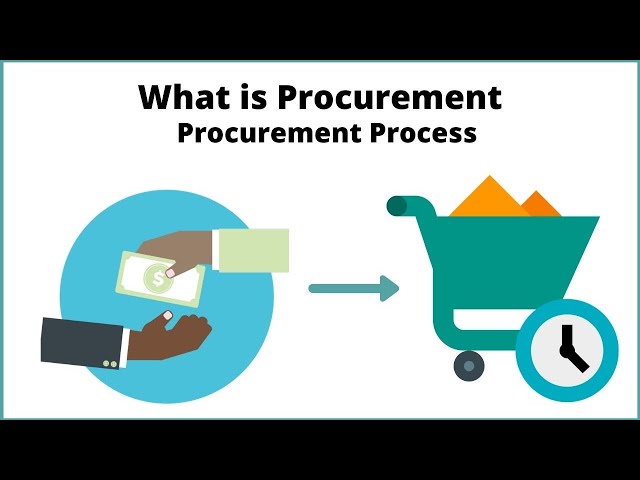What is Supplier Selection.
Supplier selection is the process of choosing suppliers for goods and services that an organization needs. It is an important aspect of supply chain management, as the choice of supplier can have a significant impact on the organization’s costs, quality, and overall performance. We will discuss the importance of supplier selection and the steps involved in the supplier selection process.
First, let’s talk about why supplier selection is important. The right supplier can provide high-quality products or services at a competitive price, which can help an organization reduce costs, improve efficiency, and increase customer satisfaction. On the other hand, a poor choice of supplier can result in delays, defects, and other problems that can have a negative impact on the organization.
Now let’s go over the steps involved in the supplier selection process.
- Identify needs: The first step in supplier selection is to identify the goods and services that the organization needs and the criteria that will be used to evaluate potential suppliers. This may involve reviewing the organization’s current suppliers and identifying areas where improvements could be made.
- Supplier evaluation: After the needs and criteria have been identified, the next step is to evaluate potential suppliers to determine which ones are the most suitable for the organization’s needs. This may involve reviewing their product or service offerings, their track record, and their financial stability.
- Supplier selection criteria: Once potential suppliers have been identified, the next step is to develop a set of selection criteria that will be used to evaluate and compare the suppliers. This may include factors such as price, quality, delivery times, and environmental and social responsibility.
- Request for proposal: After the selection criteria have been established, the next step is to send a request for proposal (RFP) to the potential suppliers. The RFP should outline the organization’s needs and the selection criteria that will be used to evaluate the suppliers.
- Supplier evaluation and selection: After the RFP has been sent out, the next step is to evaluate the proposals received from the suppliers and select the most suitable one. This may involve reviewing the proposals, negotiating terms, and conducting due diligence on the supplier.
- Supplier contract: The final step in the supplier selection process is to negotiate and sign a contract with the selected supplier. The contract should outline the terms of the relationship, including the products or services to be provided, the price, the delivery times, and any other relevant terms.
Supplier selection is a crucial aspect of supply chain management that helps organizations choose the right suppliers to meet their needs. By following the steps you can improve your supplier selection process and make more informed decisions about which suppliers to work with.
Pros and Cons of Supplier Selection
Supplier selection has several potential benefits, including:
Pros:
- Improved quality: By selecting high-quality suppliers, organizations can improve the quality of their products or services and increase customer satisfaction.
- Reduced costs: By selecting suppliers that offer competitive prices and efficient production and delivery processes, organizations can reduce their costs and improve their bottom line.
- Increased efficiency: By choosing reliable suppliers that deliver products and services on time, organizations can improve their efficiency and reduce the risk of delays or disruptions.
However, supplier selection also has some potential drawbacks, including:
Cons:
- Limited options: Depending on the industry and the products or services being sourced, the number of potential suppliers may be limited, which can limit the organization’s ability to negotiate favorable terms.
- Complexity: Evaluating and comparing potential suppliers can be a complex process, particularly for large or diverse organizations.
- Risk of supplier failure: There is always a risk that a supplier will fail to meet the organization’s needs or expectations, which can result in delays, defects, or other problems.
- Limited accuracy: Accurate supplier selection relies on accurate information about the suppliers, which can be difficult to obtain with certainty.
Supplier Selection Cost Savings
Careful supplier selection can help a company to save money in a number of ways:
- Reduced costs: By carefully evaluating potential suppliers and negotiating favorable terms and prices, a company can reduce the costs of the goods and services it purchases.
- Improved quality: By selecting reliable and reputable suppliers, a company can reduce the risk of quality issues, which can save money on returns, repairs, or replacements.
- Enhanced efficiency: By selecting suppliers who are able to meet the company’s needs in a timely and efficient manner, a company can improve the efficiency of its operations, which can save money on time and resources.
- Increased bargaining power: By consolidating its purchases or partnering with other companies, a company may be able to negotiate better terms or prices from suppliers, which can save money.
- Risk management: By carefully evaluating and selecting suppliers, a company can reduce the risk of supply chain disruptions, which can save money on lost sales or other costs.
Overall, careful supplier selection can help a company to save money by reducing costs, improving quality, enhancing efficiency, increasing bargaining power, and managing risk.
Supplier Management Resources
What is Procurement? | Procurement Process.
Tips to Negotiate Lower Real Estate Commission.
NAR Settlement Real Estate Changes.
Science Of Persuasion – Improve Your Negotiation Skills
Train by Primary SCM Process
End To End Supply Chain Management Process
- Plan it: What is Supply Chain Planning and Strategy?
- Buy it: What is Supplier Management and Procurement?
- Store it: What is Distribution, Warehouse and Inventory Management?
- Make it: What is Manufacturing?
- Ship it: What is Transportation, Logistics and Shipping?
- Return it: What is Return and Reverse Logistics?




